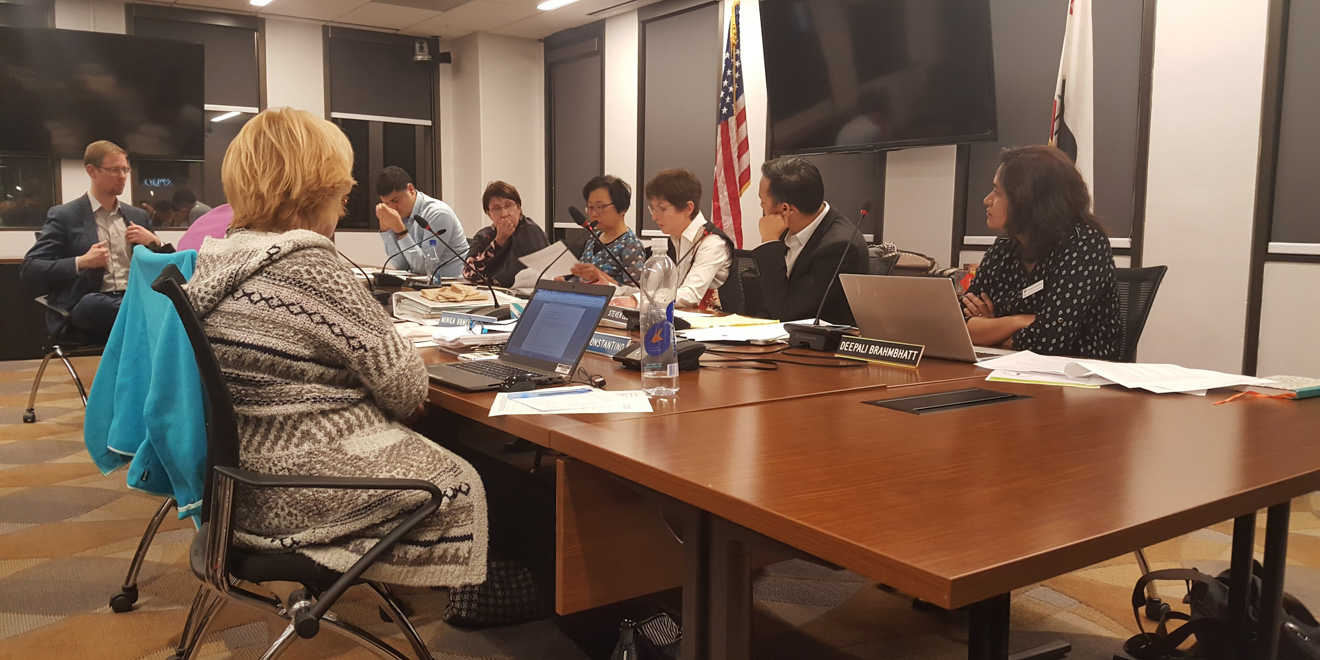Last Thursday, the City of Palo Alto Human Relations Commission (HRC) unanimously voted in favor of the Convention of the Elimination of all Forms of Discrimination Against Women (CEDAW) ordinance, which aims to mitigate gender inequality in Palo Alto by conducting a gender analysis and potentially creating a gender equality task force. With the HRC’s recommendation, the ordinance will now be passed onto the Palo Alto City Council for consideration.
The HRC is composed of seven residents of the city of Palo Alto who are not affiliated with the Palo Alto City Council. The group is given the discretion to act on matters regarding unfair treatment, particularly when it finds that an individual or group “does not benefit fully from public or private opportunities or resources in the community.”
In this case, the HRC met to address recent pressure from local gender equality activists to conduct an analysis on gender discrimination throughout the city. In Dec. 2016, the City Council introduced and passed Council Resolution #9653, which formally reaffirmed Palo Alto’s commitment to a “diverse, supportive, inclusive, and protective community.”
The HRC, currently comprised of six Palo Alto residents, along with Staff Liaison Minka van der Zwaag and Council Liaison Cory Wolbach, were in attendance at the meeting.
The ordinance, introduced by HRC chair Valerie Stinger, was originally a treaty written by the United Nations (UN) in 1979 that advocated for equal opportunity for women in society, employment and government.
The United States is one of six UN member countries that did not ratify the treaty, so the Cities for CEDAW campaign was adopted to “encourage cities and counties to pass local legislation establishing the principles of CEDAW,” according to the HRC preliminary report. San Francisco, Berkeley, Los Angeles, San Jose and Santa Clara County have all passed local ordinances to become CEDAW cities – Palo Alto, meanwhile, has not.
Obstacles preventing Palo Alto from ratifying the ordinance include its feasibility of implementation as well as its wording. Van der Zwaag raised some of these concerns at the meeting, emphasizing the time commitment, vagueness in the ordinance’s phrasing and the limited capacity of the City to uphold it in the long-run.
“I believe that the work involved in the mechanics of setting up and upholding the ordinance may take time away from other efforts to make meaningful impact on gender equality,” she said.
Human Relations Commissioner Steven Lee was the first to respond to these concerns at the meeting, acknowledging what he believes to be “indisputable” gender inequality issues “pervading our communities at large.”
“A separate gender equality task force will allow us to […] leverage the tremendous expertise [and] passion […] in this community,” he said, referring to both Palo Alto and the Stanford campus.
Following Lee’s statement, the HRC opened up the meeting to the public. One Palo Alto resident expressed concerns that the city would not be able to afford CEDAW. She pointed to the already-existing Evidence and Data for Gender Equality project, an initiative that collects statistics for evidence-based policies to improve gender inequality, as a cheaper alternative to CEDAW.
Another Palo Alto local disagreed, asserting that the symbolic importance of committing the city of Palo Alto to the ordinance should be a serious consideration.
“The extent to which Palo Alto commits [its] resources is an affirmation of the extent to which we value equity for women … I think we need to reflect on what we want to tell our children about how we chose to spend our money,” she said.
Members of the HRC offered different perspectives on issues of funding. HRC member Jill O’Nan said she was worried about the cost of implementing the ordinance, given Palo Alto’s small size. She cited that that Berkeley, the smallest city to adopt the CEDAW to-date, had a population of around 120,000 at the time of the ordinance’s implementation – almost twice the size of Palo Alto’s own population.
HRC member Deepali Brahmbhatt responded by saying that “Palo Alto has a lot more resources than Berkeley has.”
Lee added that the city could partner with student groups at Stanford to help shoulder some of the ordinance’s financial burden. Specifically, he cited Women of Stanford Law as a group that has expressed support for the city’s gender task force.
O’Nan expressed doubt over Stanford’s commitment to the issue and to the city of Palo Alto, recounting her personal experience working with the University in the past.
“Stanford’s happy to help if you pay their consultation fee,” she said. “It was really, really expensive. They’re not that invested in Palo Alto.”
She added that while the HRC has pursued large projects before, it should think long and hard before committing to the CEDAW ordinance.
Despite the HRC’s prior concerns regarding the ordinance’s implementation, Wolbach suggested that the group simply “recommend something to [City] Council” if the HRC believes it to be a good recommendation. Earlier in the meeting, Wolbach expressed that the City Council encourages the HRC to make proposals.
“We asked [the HRC] for recommendations,” Wolbach said. “We asked, ‘what can we do to make this resolution real?’”
The meeting concluded with a unanimous vote in favor of making a recommendation.
The next HRC meeting will occur on Thursday, Mar. 8 in Palo Alto City Hall.
Contact Elena Shao at eshao98 ‘at’ stanford.edu.
